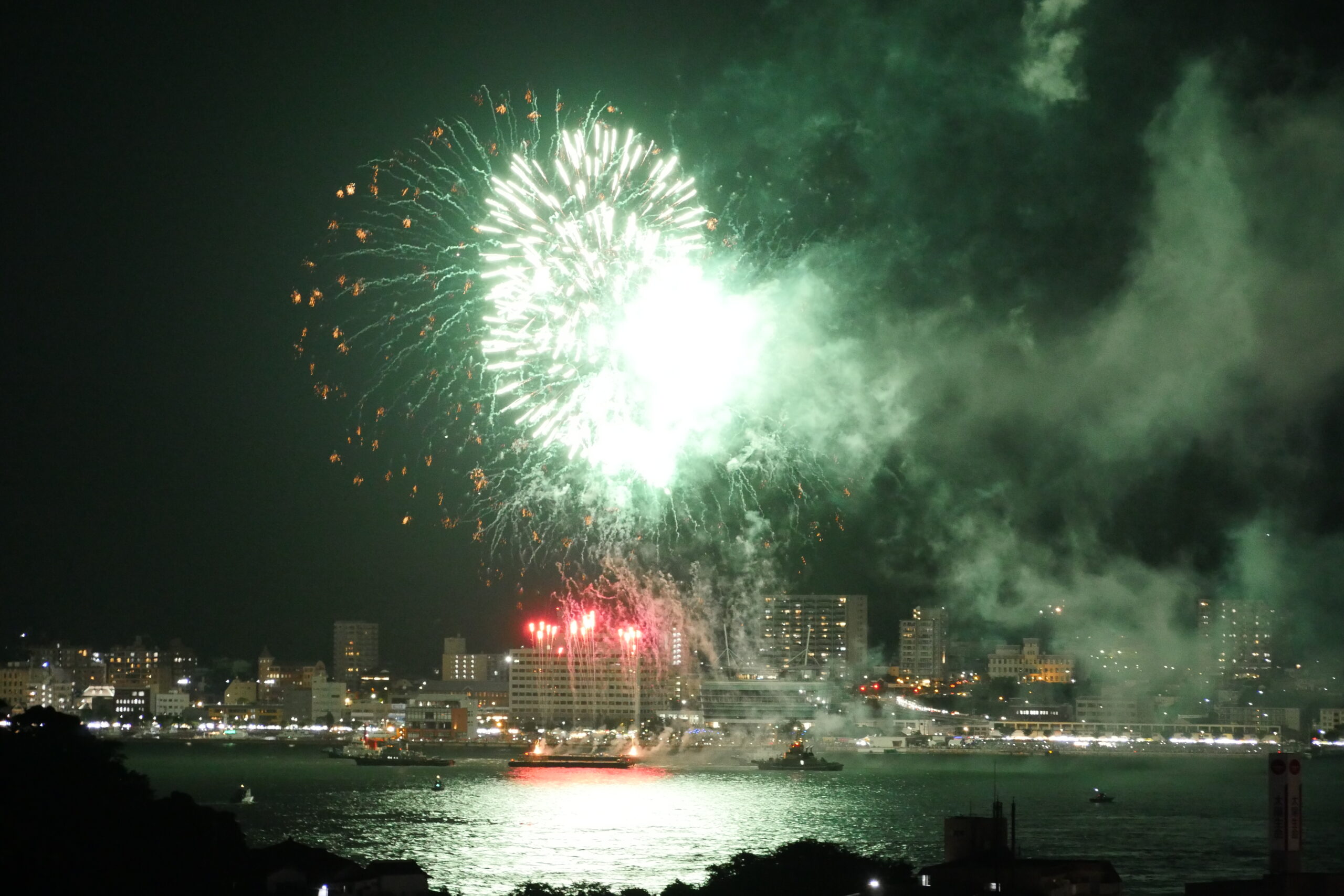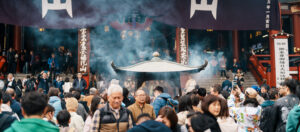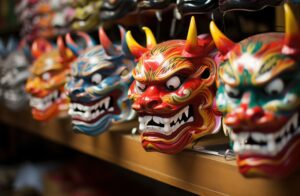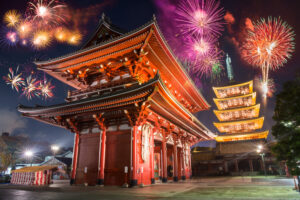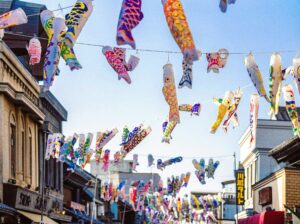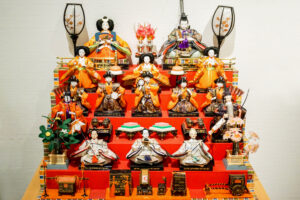Tenjin Matsuri is one of Japan’s most celebrated festivals, drawing locals and tourists alike to Osaka each year. Renowned for its vibrant celebrations, the festival is steeped in history, culture, and a sense of community that resonates throughout the city. As people fill the streets and rivers, a kaleidoscope of colors, sounds, and flavors comes alive, encapsulating the essence of Japanese tradition. This article explores the multifaceted aspects of Tenjin Matsuri, from its historical roots to its modern-day significance, offering a comprehensive overview of this remarkable cultural spectacle.
Introduction to Tenjin Matsuri: A Cultural Spectacle
Tenjin Matsuri, held annually in Osaka, is a dazzling celebration dedicated to the deity Sugawara no Michizane, known as Tenjin. This festival is not just an event; it is a vibrant spectacle that embodies the spirit and identity of the people of Osaka. The festival takes place over two days, featuring a myriad of activities that showcase traditional Japanese culture. From elaborate parades to serene boat processions on the river, Tenjin Matsuri captivates audiences with its lively atmosphere and deep-rooted customs.
At the heart of Tenjin Matsuri is the belief that the festival serves to honor Tenjin, the god of learning. The festival attracts students and scholars who pray for academic success and guidance. This spiritual connection elevates the festival beyond mere entertainment, positioning it as a significant cultural and religious event that unites the community in devotion and celebration.
The festival is characterized by its dynamic energy, with thousands of participants and spectators gathering to indulge in the festivities. From the vibrant sounds of traditional music to the visual splendor of ornate floats, Tenjin Matsuri offers a sensory experience that is both enchanting and memorable. It stands as a testament to the enduring nature of Japanese traditions, demonstrating how cultural celebrations can foster a strong sense of identity and belonging.
In recent years, Tenjin Matsuri has also gained international recognition, attracting visitors from around the globe. This influx of tourists has not only contributed to the local economy but has also facilitated cultural exchange, allowing people from different backgrounds to partake in the festival’s unique traditions. As a result, Tenjin Matsuri continues to evolve while remaining firmly rooted in its historical context.
Ultimately, Tenjin Matsuri is much more than a festival; it is a living cultural heritage that celebrates the richness of Japan’s past while adapting to contemporary society. It exemplifies the power of tradition in bringing people together, creating lasting memories and connections across generations.
The Historical Significance of Tenjin Matsuri Festival
The origins of Tenjin Matsuri can be traced back to the Heian period (794-1185) when Sugawara no Michizane, a prominent scholar and statesman, was deified after his death. The festival was established to appease his spirit, and it has been celebrated for over a millennium, making it one of Japan’s oldest festivals. Its historical significance is underscored by its inclusion in the UNESCO Intangible Cultural Heritage list, recognizing it as a vital component of Japan’s cultural landscape.
Initially, the festival was primarily an offering to the deity for agricultural prosperity and favorable weather. As time progressed, the festival evolved to include various rites and rituals, reflecting the changing social and cultural dynamics of the era. The integration of elements such as boat processions and traditional performances contributed to the festival’s rich tapestry of activities, making it a grand spectacle that attracts attention from far and wide.
One of the key historical milestones of Tenjin Matsuri occurred during the Edo period (1603-1868), when the festival expanded significantly in scope and scale. The growth of Osaka as a commercial center during this time led to an influx of people and resources, further enhancing the festival’s relevance. The lavish floats and elaborate processions we see today can be traced back to this transformative period.
The festival’s historical significance is not only reflected in its age but also in its role as a community unifier. For centuries, it has served as a platform for the collective expression of gratitude, reverence, and cultural pride. The enduring legacy of Tenjin Matsuri can be attributed to its ability to adapt and remain relevant to contemporary society while honoring its traditional roots.
Today, as Japan continues to navigate the complexities of modernization, festivals like Tenjin Matsuri play a crucial role in preserving cultural heritage. The festival acts as a reminder of the importance of history and tradition in shaping current identities and values.
Dates and Duration: When to Experience the Celebration
The Tenjin Matsuri festival is typically held on July 24th and 25th each year, with the main events taking place over these two days. The festival kicks off with a series of rituals at Tenjin Shrine, where the deity is worshipped, and prayers are offered for academic success and prosperity. The festivities are characterized by a vibrant atmosphere, with the streets and riverbanks of Osaka adorned with colorful decorations and bustling with activity.
The first day of the festival is marked by a series of ceremonies, including the purification rites that prepare participants for the celebratory events to follow. This day also features a grand procession of portable shrines (mikoshi), which are carried through the streets, allowing the deity to visit the people. As night falls, the atmosphere transforms into a lively spectacle, culminating in one of the most anticipated events: the fireworks display over the river.
The second day is dedicated to the boat procession on the waterway, which is perhaps the most iconic aspect of Tenjin Matsuri. Decorated boats, accompanied by traditional musicians and performers, navigate the river, creating a breathtaking scene that reflects the festival’s maritime heritage. The entire process is steeped in rituals, symbolizing a spiritual journey that connects the community with their revered deity.
The duration of the festivities spans multiple days, including preparatory events leading up to the main celebration. Local communities engage in various activities, creating a festive atmosphere that permeates the city. Visitors are encouraged to explore the surrounding areas, where numerous food stalls and entertainment options abound, enriching the overall experience.
Attending Tenjin Matsuri during its designated dates offers a unique opportunity to immerse oneself in the vibrant culture of Osaka. The festival’s reputation for being one of Japan’s most spectacular celebrations ensures that it remains a highlight of the summer calendar for both locals and tourists.
Rituals and Ceremonies: Unpacking the Festivities
At the heart of Tenjin Matsuri are the rituals and ceremonies that form the backbone of the festival. These sacred practices are designed to honor the deity, Sugawara no Michizane, and invoke blessings for the community. The festival commences with a series of offerings and purification rites at Tenjin Shrine, where priests perform rituals to invite the spirit of the god into the portable shrine.
The first day features a grand procession of mikoshi, or portable shrines, which are carried through the streets by participants dressed in traditional attire. This procession is a significant aspect of the festival, as it symbolizes the deity’s visit to the people. The enthusiastic chanting and rhythmic movements of the bearers create a palpable sense of excitement and devotion, embodying the community’s connection to their spiritual heritage.
Another essential ritual involves the purification of the river through which the boats will travel. This cleansing process is laden with symbolism, representing the relationship between the community and the natural elements. It showcases the reverence that the Japanese people have for nature, linking their spiritual practices with environmental consciousness.
As the evening approaches on the first day, the festival transitions into a festive celebration, featuring traditional performances, music, and dance. The ambiance shifts from solemn rituals to joyous festivities, reflecting the dual nature of Tenjin Matsuri as a spiritual and cultural event. The evening culminates in a spectacular fireworks display, illuminating the night sky and marking the end of the first day.
On the second day, the focus shifts to the boat procession, where intricately decorated vessels glide along the river. This ceremony is a visual feast, highlighting the artistry and craftsmanship involved in creating the boats. Participants engage in traditional music and dance as they navigate the waterways, creating a captivating atmosphere that enchants both locals and visitors.
Overall, the rituals and ceremonies of Tenjin Matsuri are a profound expression of faith, culture, and community. They reflect the age-old traditions that have been passed down through generations, ensuring that the legacy of Tenjin Matsuri endures for years to come.
The Role of Tenjin Shrine in the Festival’s Legacy
Tenjin Shrine serves as the spiritual epicenter of Tenjin Matsuri, playing a vital role in the festival’s history and significance. Constructed in the early 10th century, the shrine is dedicated to Sugawara no Michizane, the God of Learning, and has become a revered site for students and scholars seeking wisdom and success in their studies. The shrine’s deep historical roots provide a sense of continuity and tradition that resonates through the festival’s celebrations.
During Tenjin Matsuri, the shrine becomes a focal point for the various rituals and ceremonies. The daily activities at the shrine include offerings, prayers, and purification rites, all aimed at invoking the blessings of Tenjin. Visitors often flock to the shrine during the festival to partake in these spiritual practices, reinforcing the shrine’s role as a space for reflection and devotion.
The architectural beauty of Tenjin Shrine also draws attention during the festival. The structure is adorned with intricate carvings and seasonal decorations that enhance its aesthetic appeal. The vibrant colors and traditional designs create a picturesque backdrop for the festivities, attracting photographers and art enthusiasts alike.
Moreover, the shrine acts as a bridge between the past and the present, offering modern participants a glimpse into the rich cultural heritage of Japan. The rituals performed at Tenjin Shrine during the festival serve as a reminder of the importance of honoring one’s ancestors and maintaining a connection to history. This continuity strengthens the community’s identity and collective memory.
The legacy of Tenjin Shrine extends beyond the festival itself. Throughout the year, the shrine remains a place of worship and pilgrimage, with countless visitors seeking to pay their respects to the deity. The enduring significance of the shrine in the lives of the local community highlights the cultural importance of Tenjin Matsuri as more than just a festival; it is a celebration of faith, tradition, and the human experience.
In summary, Tenjin Shrine is a cornerstone of Tenjin Matsuri, embodying the spiritual essence of the festival while serving as a living testament to Japan’s rich cultural history. Its role in the festival’s legacy ensures that the teachings and traditions associated with Sugawara no Michizane continue to thrive.
Traditional Costumes: A Visual Feast of Colors
One of the most striking features of Tenjin Matsuri is the traditional costumes worn by participants during the festival. The clothing reflects Japan’s rich cultural heritage, showcasing a variety of styles and colors that enhance the overall visual appeal of the celebration. Participants donning these costumes not only pay homage to their ancestors but also contribute to the festival’s vibrant atmosphere.
The attire worn during Tenjin Matsuri varies based on the roles of the participants. Those carrying the mikoshi typically wear happi coats, which are short, traditional jackets adorned with the festival’s emblem. These garments are often brightly colored and feature striking patterns, adding to the festive ambiance. The practical design of the happi coats allows for ease of movement, essential for the physically demanding task of carrying the portable shrine.
In contrast, performers of traditional music and dance often wear more elaborate and ornate costumes. These outfits are intricately designed with beautiful patterns, luxurious fabrics, and colorful accessories, reflecting the artistry and craftsmanship that characterize Japanese traditional clothing. The costumes serve not only as a means of expression but also as a visual representation of the rich cultural narratives woven into each performance.
Additionally, the festival sees a variety of other traditional garments, including kimono and yukata, worn by attendees. The choice of attire may reflect an individual’s connection to their heritage, as many families choose to wear traditional clothing as a way of honoring their cultural roots. This practice fosters a sense of unity and belonging, as people come together to celebrate their shared history.
The striking visuals of Tenjin Matsuri are further enhanced by the participation of children, who often dress in miniature versions of traditional costumes. Their joyful presence adds an extra layer of charm to the festivities, symbolizing the passing down of cultural traditions from one generation to the next.
Ultimately, the traditional costumes worn during Tenjin Matsuri are more than just decorative attire; they are a celebration of Japanese culture and identity. The vibrant colors and intricate designs create a visually stunning spectacle that captivates audiences and reinforces the festival’s significance as a cultural event.
Boats and Processions: The Heart of Tenjin Matsuri
Boats and processions are at the very heart of Tenjin Matsuri, embodying its spirit and cultural significance. The festival features a grand boat procession, where elaborately decorated vessels carry the mikoshi along the river, forming a captivating visual narrative that highlights the deep connections between the community and its waterways. This tradition is deeply rooted in the history of Osaka, a city that has long relied on its rivers for commerce and transportation.
On the second day of the festival, the river transforms into a vibrant spectacle as boats adorned with colorful banners and intricate designs set sail. These vessels are not merely means of transport; they represent the spiritual journey of the deity as it travels through the community. Each boat is manned by participants dressed in traditional attire, who engage in lively music and dance, creating a festive atmosphere that enthralls onlookers.
The procession is a celebration of both artistry and teamwork. The boats are crafted with great care and attention to detail, often reflecting local artistry and craftsmanship. Participants work together to navigate the waterways, demonstrating a strong sense of community and collaboration that is intrinsic to the festival’s legacy. The harmonious blending of tradition and teamwork is a testament to the values that underpin Tenjin Matsuri.
As the boats journey along the river, they are accompanied by traditional musicians playing instruments such as taiko drums and shamisen. The rhythmic sounds of the music elevate the ambiance, creating a dynamic interplay between movement and sound. This musical accompaniment is a critical component of the procession, adding depth to the experience and enhancing the connection between the spiritual and the cultural.
The river serves as both a physical and metaphysical space during Tenjin Matsuri, symbolizing the flow of life and the interconnectedness of the community. As the boats glide along the water, they bridge the gap between the past and present, creating a sense of continuity that reinforces the festival’s significance. The procession becomes a living testament to the enduring legacy of Tenjin Matsuri, evoking a spirit of unity and shared celebration.
In summary, the boats and processions of Tenjin Matsuri are emblematic of the festival’s essence, encapsulating the rich cultural heritage and community spirit that define this vibrant celebration. The interplay of artistry, tradition, and teamwork transforms the river into a dynamic space of joy and reverence, making the boat procession one of the most cherished aspects of the festival.
Culinary Delights: Food Traditions During the Festival
The culinary traditions associated with Tenjin Matsuri are an integral part of the festival experience, reflecting the rich flavors and cultural diversity of Osaka’s street food scene. As attendees gather to partake in the festivities, the air fills with the enticing aromas of traditional dishes that tantalize the senses. Food stalls line the streets and riverbanks, offering a myriad of delicious options that cater to diverse tastes.
One of the most popular snacks enjoyed during Tenjin Matsuri is yakitori, skewered and grilled chicken that is seasoned to perfection. This savory dish is a staple at festivals and is often enjoyed alongside a refreshing drink, making it a favorite among festival-goers. The ritual of gathering around food stalls to savor these treats fosters a sense of camaraderie and community among attendees.
Another beloved delicacy is takoyaki, a savory ball-shaped snack filled with diced octopus, green onions, and batter. These delectable bites are cooked in special molds, resulting in a crispy exterior and a gooey center. Takoyaki is typically served with a drizzle of takoyaki sauce and a sprinkle of bonito flakes, making it a favorite among locals and visitors alike. The vibrant street food culture during Tenjin Matsuri reflects the city’s culinary heritage, showcasing the creativity and skill of local vendors.
In addition to these iconic dishes, festival-goers can also enjoy a variety of sweets, such as kakigori, a refreshing shaved ice treat that comes in a range of flavors. This cool dessert is especially popular during the summer months, providing a delightful way to beat the heat while indulging in something sweet. The colorful displays of desserts add to the festive atmosphere, attracting both children and adults alike.
The culinary offerings at Tenjin Matsuri are not just about satisfying hunger; they also serve as a way to bring people together. Sharing food with friends and family during the festival creates opportunities for bonding and connection, reinforcing the communal spirit that is central to the celebration. The act of enjoying traditional dishes can also evoke memories and stories, connecting attendees to their cultural heritage.
Ultimately, the food traditions during Tenjin Matsuri contribute to the overall vibrancy and excitement of the festival. The diverse array of flavors and dishes not only enhances the experience for attendees but also showcases the rich culinary heritage of Osaka, making the festival a feast for the senses.
Music and Dance: Capturing the Spirit of Tenjin
Music and dance play a pivotal role in the celebrations of Tenjin Matsuri, infusing the festival with energy and vitality. Traditional performances are woven into the fabric of the festival, reflecting the rich cultural heritage of Japan while providing a platform for artistic expression. The harmonious blend of music and movement captures the spirit of Tenjin Matsuri, creating a dynamic atmosphere that resonates with participants and spectators alike.
During the festival, various forms of traditional music can be heard, including the rhythmic beats of taiko drums, the melodious sounds of the shamisen, and the enchanting tunes of flutes. Each instrument contributes to the overall soundscape of the festival, creating an auditory experience that complements the colorful visual elements. The lively rhythms of taiko drumming, in particular, energize the atmosphere, drawing people into the heart of the celebration.
Dance performances are equally integral to the festivities, with participants showcasing traditional dances that have been passed down through generations. These dances often tell stories or depict historical events, allowing performers to connect the past with the present. The intricate movements and colorful costumes create a captivating visual spectacle that enchants audiences and fosters a sense of cultural pride.
In addition to scheduled performances, spontaneous dance and music often occur throughout the festival, as attendees join in the festivities. This communal participation embodies the essence of Tenjin Matsuri as a celebration of togetherness and joy. The infectious spirit of the festival encourages everyone, regardless of age or background, to engage in the artistic expressions that define the event.
The integration of music and dance into Tenjin Matsuri also serves as a means of spiritual connection. Many performances are rooted in religious rituals, designed to honor the deity and seek blessings for the community. This intertwining of artistry and spirituality reinforces the festival’s significance, positioning it as both a cultural and religious celebration.
Ultimately, music and dance elevate Tenjin Matsuri to a realm of joy and festivity, capturing the hearts of those who participate and observe. The dynamic performances and vibrant sounds create a tapestry of cultural expression that enriches the festival experience, ensuring that the spirit of Tenjin Matsuri continues to thrive for generations to come.
Community Involvement: Bridging Generations Through Culture
Community involvement is a cornerstone of Tenjin Matsuri, fostering unity and collaboration among participants and attendees. The festival serves as a platform for generations to come together, sharing in the rich tapestry of cultural traditions that define Osaka. From planning and organizing events to participating in rituals and performances, the festival embodies the spirit of community engagement, ensuring that cultural heritage is passed down through the years.
Local residents play a crucial role in the preparation and execution of Tenjin Matsuri, dedicating their time and effort to ensure the festival’s success. From crafting
